Posted July 28, 2017 by Nicky in Reviews / 0 Comments
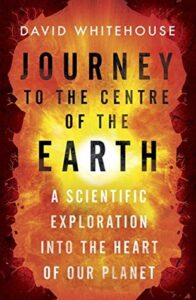 Journey to the Centre of the Earth, David Whitehouse
Journey to the Centre of the Earth, David Whitehouse
This book uses all kinds of insights from mineralogy and seismology to put together a picture of what the Earth’s composed of, layer by layer. Despite the author’s obvious enthusiasm, this isn’t one of my primary interests, and I did find my interest flagging at times — it seemed like some chapters were just unnecessarily dragged out and like he got off the point some of the time. Nonetheless, if this is the kind of science that enthuses you, it’s worth reading — it deals with the history of the study of our Earth as well as the straightforward facts about the composition of each layer.
The more I learn about all kinds of science, including Earth science, the happier I am. Even if it’s not my field, I’m glad I read this.
Rating: 3/5
Tags: book reviews, books, non-fiction, science
Posted July 20, 2017 by Nicky in Reviews / 0 Comments
 A Rough Ride to the Future, James Lovelock
A Rough Ride to the Future, James Lovelock
I found Gaia interesting, and if not entirely in line with what I believe, still plausible; it’s obvious that the Earth’s ecosystems are governed by systems of feedback, and that sometimes that has had a stabilising effect — and that life continues to find a way to survive. From this book, it seems like Lovelock believes the ‘rough ride’ is mostly for humanity, ignoring the fact that we’ve severely thrown off natural systems, and that we’re not innocent in this. We’ve known we’re doing it for quite some time, and yet he sort of shrugs it off and says there’s no use feeling guilty. Well, guilt won’t fix the climate, but a sense of responsibility might help.
He’s right that humans have to change and adapt to the changing climate, but I’m not so sanguine that’s going to be enough for life to go on. I’m pretty sure bacteria and archaea will get along fine, but we’re decimating the ranks of amphibians, big mammals, sea creatures, etc. And he’s not always up on modern science: he still seems to believe, here, that the atmosphere can’t be more than about 25% oxygen without causing regular devastating fires. He’s wrong: we know the oxygen saturation has been much higher, and life went on — that’s why there were gigantic dragonflies; they couldn’t have survived in a lower-oxygen atmosphere.
While the Gaia theory has been influential, I think perhaps Lovelock should sit down and stop profiting by it. This book is rather rambling, at times even confused.
Rating: 2/5
Tags: book reviews, books, non-fiction, science
Posted July 6, 2017 by Nicky in Reviews / 0 Comments
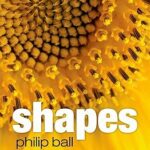


Nature’s Patterns: A Tapestry in Three Parts — Shapes, Flow, Branches, Philip Ball
There’s a lot of info in these three books about patterns formed both by life and by other, non-living natural processes. Sometimes it got a little too much for me to process and I started glazing over — mostly when math came into it. EVen given that, it’s still a fascinating look about how patterns form, and a good note of caution to sound about genetic determinism. Just as the colours of a calico cat aren’t determined genetically — so a clone of one calico cat would not have the same patterns as the first — neither are many other patterns in nature, whether in pelt colour and pattern or the building of nests. Instead, there seem to be sets of rules built in: processes that will occur in all genetically normal members of a species, but which won’t produce the same pattern time and again.
It’s also a good reminder that even with Batesian mimicry, there’s no intent behind it. The genetic code just happens to code for proteins which work in a particular way, ultimately producing a particular pattern. That’s obvious when we see the way other natural systems create the same patterns — rivers, sand dunes, chemical reactions.
Worth reading, definitely. And personally, I was really intrigued to learn that it was Alan Turing who actually proposed some theories of how animals get their patterned fur. Not just a code-breaking genius, clearly. Individually, I might rate each of these three books a ‘3’, but together… a 4, I think.
Rating: 4/5
Tags: book reviews, books, non-fictions, science
Posted June 25, 2017 by Nicky in Reviews / 0 Comments
 The Sixth Extinction, Elizabeth Kolbert
The Sixth Extinction, Elizabeth Kolbert
Considering the subject matter — the extinction or likely extinction of much of Earth’s biodiversity — Kolbert manages to write an absorbing narrative which wasn’t just depressing, though it sometimes was that, but also fascinating. She covers various creatures that we may have seen the last of, or may soon see the last of; creatures which only survive in captivity, and creatures which we didn’t even think to protect.
The fact is, humans are doing a lot of damage to our own ecosystems. Kolbert documents that and shows where it’s going, or at least, where it’s likely to go. What happens in the end is still, maybe, there for us to change. Maybe. It’s too late for a lot of species — perhaps most amphibians, for example — but we might still be able to stop this. The Sixth Extinction goes into some of the delights biodiversity has to offer, perhaps in hopes of inspiring some people to step up.
None of it came as a surprise to me, but I found the book interesting and entertaining all the same, if not exactly uplifting.
Rating: 4/5
Tags: book reviews, books, non-fiction, science
Posted June 23, 2017 by Nicky in Reviews / 0 Comments
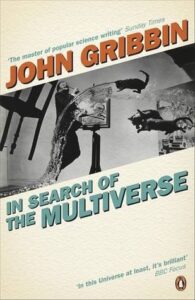 In Search of the Multiverse, John Gribbin
In Search of the Multiverse, John Gribbin
I don’t understand quantum physics or string theory, really — I couldn’t possibly explain them to someone, anyway. But I keep trying to, and this book has probably got the closest to making me really interested in the topic. It’s easy enough to follow, and doesn’t throw maths at you without explanation, and it helps that it’s focused on one of the important more interesting factors: quantum theory and string theory could require a multiverse. Gribbin has a look at all the reasons a multiverse seems likely, including the fact that quantum computing works at all, and takes you through anthropic reasoning, etc, etc.
Overall, I still find parts of this difficult to get on with. We can’t know that we live in an average universe — even if there are an infinity of different universes, that doesn’t follow that universes which are suitable for life are more common. We could be living in a rare universe. We can’t see what the probabilities of anything are when we only have experience of one universe — nobody has ever convinced me we have the data to really judge.
This is probably going to date badly when it comes to its explanations of string theory and a theory of everything, but for someone as lacking in knowledge as me, it works.
Rating: 3/5
Tags: book reviews, books, non-fiction, science
Posted June 18, 2017 by Nicky in Reviews / 3 Comments

Pavlov’s Dogs and Schrodinger’s Cat, Rom Harré
I’m torn about this book: on the one hand, it does what it sets out to do pretty well. It describes experiments that happened to use living subjects, treating those living subjects as though they’re simply part of the equipment. On the other hand, it very deliberately doesn’t engage with the moral aspect of these experiments, instead choosing to present the experiments dispassionately, claiming to be unable to deal with the moral dimension.
I can appreciate this way of looking at the experiments as a way to gain an understanding of them, but I think avoiding the moral dimension in the end just seems cowardly. If it’s your point of view that the suffering of an animal is worth it for the sake of the experiments, then at least own it. Admit the distress is there.
Without addressing that aspect, this book actually comes across as very flat. I ended up losing interest in a lot of these experiments, because animals aren’t just another piece of equipment. We have to use living tissue in experiments because only living tissue responds in the weird and wonderful ways that it needs to in order to give true results. Pretending a dog is a just a petri dish that happens to be pumping blood and breathing air seems disingenuous and pointless.
If you’re interested in the purely scientific treatment of animals as just objects in an experiment, this will work fine for you — that’s what the author delivers. If you find it hard to separate the two, or like me believe that it’s our duty to at least own what we do to animals, then it may fall rather flat.
Rating: 2/5
Tags: book reviews, books, non-fiction, science
Posted June 14, 2017 by Nicky in Reviews / 3 Comments
 Dino Gangs, Josh Young
Dino Gangs, Josh Young
Based on the work of Philip J. Currie, the man who helped to found the Royal Tyrrell Museum in Drumheller (a very worthwhile visit if you find yourself in Alberta), this book goes into various aspects of dinosaur life, mostly focusing on the tyrannosaurid Tarbosaurus. The main theme is Currie’s theory that they hunted as a pack, based on several lines of evidence such as finding articulated skeletons apparently buried at the same time, the high proportion of predators in the landscape, etc.
Unfortunately, there are two problems with this book. One is the repetition. The other is the fact that evidence contradicting Currie’s theories is presented several times, and then ignored — like the fact that the bonebeds might show a high proportion of Tarbosaurus, but their trackways comprise only 5% of the estimated population. And the fact that Komodo dragons devour their prey whole, which would lead to deposition of more predator remains than prey, even though prey are actually more abundant. Or the fact that the geologists aren’t at all sure the bodies were deposited at the same time.
I have no problem with the idea of dinosaurs as pack animals, but there seem to be some serious objections to Currie’s reasoning, which this book rather skims past as if they don’t matter. The way Young portrays Currie, it’s as though he pounces on things that confirm his ideas, and dismisses other things because they don’t fit with his ideas — the marks of a terrible scientist. Currie is widely respected, so that may well not be true, but that was definitely the impression I got here.
There are interesting more general bits of info about palaeontology, other aspects of Tarbosaurus, the realities of fieldwork… but mostly I’d stick with The Tyrannosaur Chronicles for something that feels a bit more solid.
Rating: 3/5
Tags: book reviews, books, non-fiction, science
Posted June 12, 2017 by Nicky in Reviews / 0 Comments
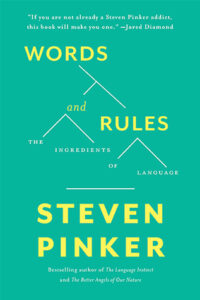 Words and Rules, Steven Pinker
Words and Rules, Steven Pinker
If you’ve read The Language Instinct, you don’t really need to read this book. It’s very much the same theory, with perhaps some different examples, maybe a slightly different slant. Reading it, there was nothing new to me, and I think that it isn’t new because it was all covered in The Language Instinct (though it may be some other books have filled in some gaps in my knowledge before this, in the interim).
Pinker’s work is reasonably easy to read and well-illustrated with examples; he’s very convincing in the way he sets forth his ideas, which does make me rather tempted to find someone who disagrees with him equally convincingly and see what I think after that. Any ideas, friends?
Rating: 3/5
Tags: book reviews, books, non-fiction, science
Posted June 11, 2017 by Nicky in Reviews / 0 Comments
 How We Live and Why We Die, Lewis Wolpert
How We Live and Why We Die, Lewis Wolpert
The front of the book blurbs this as ‘a layperson’s guide to the world within us’, and that’s exactly what this is: it’s an accessible, easy to read, whistle-stop tour of cells in the human body, and some of the history surrounding how we’ve come to understand them. If you’ve read almost anything else on the topic, there’s probably nothing new here — but if you’re revising for an exam, you could do worse than spending some time with it. Wolpert manages to explain some complex things very cogently: for example, how enzymes work in breaking bonds, changing molecules, etc.
For me, this was a bit too much of a skimming of the surface — this is stuff I know to the point where I don’t even have to look it up anymore. But for someone not that experienced in biology, or trying to refresh their memory, it’d be perfect.
Rating: 3/5
Tags: book reviews, books, non-fiction, science
Posted June 6, 2017 by Nicky in General / 10 Comments
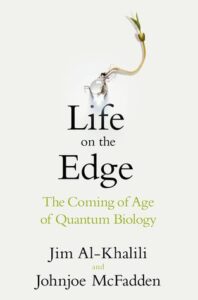 Today’s theme is ten books from [x] genre I’ve added to my TBR. Given that today is my human biology exam (wish me luck!), non-fiction/pop-science seems appropriate here!
Today’s theme is ten books from [x] genre I’ve added to my TBR. Given that today is my human biology exam (wish me luck!), non-fiction/pop-science seems appropriate here!
- Life on the Edge: The Coming of Age of Quantum Biology, by Jim Al-Khalili and Johnjoe McFadden. Quantum biology sounds slightly terrifying, if I’m honest. I understand biology, in general; I don’t understand quantum. But hopefully this book will help, right?
- The Philadelphia Chromosome, by Jessica Wapner. This is about a particular defect found in people in Philadelphia (shocking, I know) which causes cancer, and how it’s contributed to understanding cancer and how to cure it.
- Endless Forms Most Beautiful, by Sean B. Carroll. This has been recommended to me as a good book on “evo-devo”, which is a term I suddenly find cropping up everywhere.
- A Crack in Creation, by Jennifer Doudna and Samuel Sternberg. This is about the gene editing technology CRISPR, which is really fascinating stuff, and apparently this examines some of the ethics of using CRISPR, too. I have high hopes!
- Brain Washing, by Kathleen Taylor. This is one of the Oxford Landmark Science series, which I’m finding a fascinating way of exploring topics I haven’t always read about before.
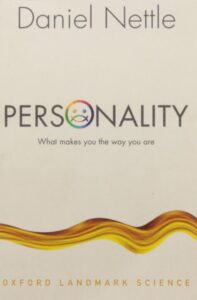
- The Sixth Extinction, by Elizabeth Kolbert. It’s about, well, extinction. I’ve just managed to find this in the library near my parents’ house, so hopefully I’ll be able to read it before I go back to Belgium!
- Vanished Ocean: How Tethys Shaped the World, by Dorrik Stowe. More in the geology/earth science line, but it was recommended in another book I read.
- Shadows of the Mind, by Roger Penrose. I don’t think I’ve read anything by Penrose, so it’s time to fill in a gap. And it’s about brain science!
- Mutants: On the Forms, Varieties and Errors of the Human Body, by Armand Marie Leroi. Right up my street, obviously!
- Personality, by Daniel Nettle. Another one of the Oxford Landmark Science series. How do our brains create personality? Gotta know.
Tags: books, non-fiction, science, Top Ten Tuesday
 Journey to the Centre of the Earth, David Whitehouse
Journey to the Centre of the Earth, David Whitehouse











